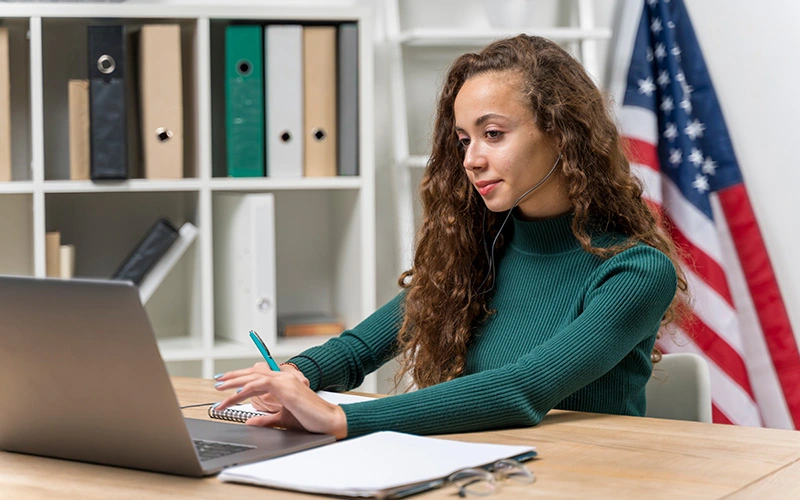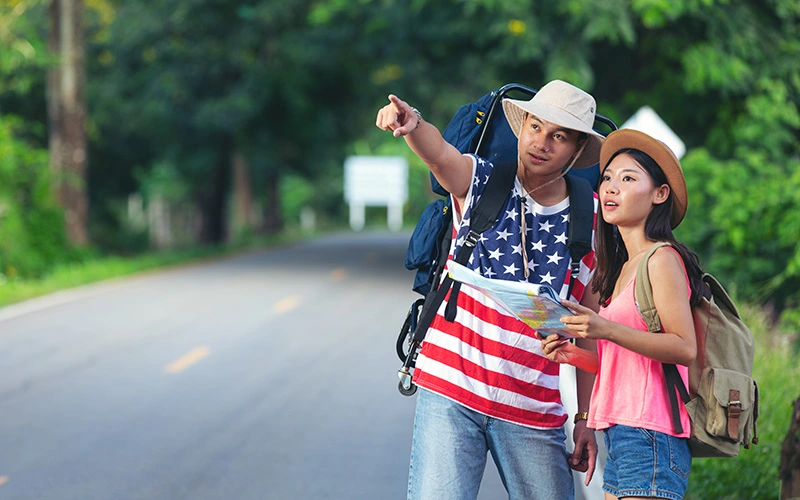One of the most difficult parts of traveling to the United States is not knowing which visa to apply for. The B1 US visa or a B2 visa are two of the most popular options. They may seem like the same thing at first glance, but in reality, they are intended for very different things. For an applicant unaccustomed to the process, the difference can be confusing; even more so, the choice between the two could mean delays or worse, rejections.
The B1 visa is available to those flying to the U.S. for business, including meetings, conferences and negotiations. The B2 Visa, meanwhile, is designed for tourism, whether that is for vacation, to see friends or family, or for a medical procedure. They both permit relatively brief stays in the United States, but each is subject to its particular rules and restrictions.
Each visa has very particular rules about what it is intended for. The objective is to ensure that visitors come to the country for the right reasons. Misunderstanding these rules at the time of application can cause confusion and a lot of times, it can result in rejection.
If you are visiting for business, you should apply for a B1 visa. But, if the travel is only for tourism or pleasure, then the B2 visa is the right one to choose. This is where a lot of travelers are confused, thinking they can use one visa for the other, but they are not interchangeable.
What Is a B1 Visa and Who Needs It?

The B1 visa is commonly used by individuals traveling for professional reasons. It’s meant for business visits to the U.S., but that doesn’t mean the traveler is allowed to work or get paid by a U.S. company. It’s strictly for things like attending meetings, conferences, negotiating contracts, or conducting market research.
For business travelers, knowing what a B1 visa in the USA is often essential. However, there’s a bit of paperwork involved. One key requirement is providing evidence of the purpose of the trip. For example, showing an invitation letter from the U.S. company or organization hosting the meeting.
B1 Visa requirements typically include showing strong ties to one’s home country to prove the individual has plans to return after the trip. This might include showing proof of employment, property ownership, or family obligations. Without this proof, it can be tough to get the visa approved.
The B1 visa USA process isn’t too complicated as long as the applicant is clear about the purpose of their trip. Still, without the proper documentation or explanation, travelers can face serious delays or denials at the embassy.
What Is a B2 Visa and When Should It Be Used?

People often wonder, what is a B2 visa for the USA? The B2 visa is for tourists. It’s one of the most commonly issued visas for those coming to the U.S. to visit friends or family, take vacations, or receive medical treatment. This is the visa most travelers think of when planning a holiday to the U.S.
Some people may think it covers a wider range of activities, but it doesn’t. It’s strictly for things like vacation, medical visits, or meeting family and friends.
The B2 visa USA is typically granted for a period of six months, but this can vary depending on the applicant’s travel plans. Immigration officers at the point of entry decide on the final duration of stay. That means the traveler could be allowed to stay for a shorter or longer period, depending on the situation. That’s why it’s important to learn the difference between B1 vs B2.
B1 vs B2 Visa: A Simple Comparison
Now, here’s the thing: the difference between the B1 vs B2 visas isn’t always crystal clear to travelers. Even experienced folks can get confused. So let’s break it down in a way that makes it easy to remember:
Feature |
B1 Visa (Business) |
B2 Visa (Tourism) |
| Purpose | Business-related activities (meetings, conferences) | Tourism, vacation, medical visits |
| Employment Allowed? | No (no paid work in the U.S.) | No (no work, even unpaid) |
| Common Uses | Business meetings, conferences, events | Sightseeing, visiting family/friends, medical treatment |
| Stay Duration | Typically up to 6 months (officer discretion) | Typically up to 6 months (officer discretion) |
| Extension Possibility | Yes, in some cases | Yes, in some cases |
| Documents Needed | Business invitation, event schedule | Travel itinerary, proof of purpose |
| Combination Visa | Yes, as US B1 B2 visa | Yes, as US B1 B2 visa |
Choosing the Right Visa for the Right Trip
When it comes down to choosing the right visa, the main thing is to be honest with yourself about why you’re traveling. If it’s for business, apply for the B1 visa. If it’s for leisure, apply for the B2 visa. If someone has a bit of both, the B1 B2 visa combo is usually the best option.
The thing that causes the most confusion is trying to mix business and pleasure without being upfront about it. Travelers should never assume a visa lets them do whatever they want. Misunderstanding these rules and differences in US B1 vs B2 visas might save time upfront, but it can cause a lot of stress down the line.
There are situations where both visas are needed, depending on the specific nature of the trip. That’s why it’s so important to know exactly what the purpose of the trip is. Some people might think B2 visas are for everything, but that’s not the case. Others may assume that B1 visas cover travel outside of business, but that’s not right either. The confusion between US business visa vs tourist visa shouldn’t be a thing if the traveler sticks to the guidelines.
Final Thoughts
Ultimately, making the right choice regarding the type of visa for a visit to the U.S. does not have to be that complicated, but it does require some careful consideration. Once you know the distinction between the B1 and B2 visas, you can select the right visa for your purposes. And if you get that right, you have less chance of delays, denials or other problems later.
It’s always best to apply for the appropriate visa up front, rather than try to clean up a mix-up later. Whether the purpose of the visit is business, leisure or all of the above, there’s a visa that fits the stay. Scheduling your US visa appointment in advance and arranging all the paperwork before your interview or travel is another step to ensure a smooth and stress-free experience in the U.S.

